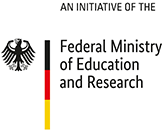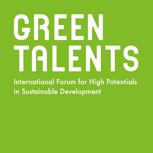PhD in Silicon Photovoltaics
Current position: Associate Professor in Photovoltaic Engineering, University of New South Wales, Australia
Research focus: advanced hydrogenation for silicon solar cells
With an academic background in Physics, Oceanography, and PV Engineering, Brett completed his PhD at the University of New South Wales (UNSW) in Australia focusing on high efficiency laser-doped silicon solar cells with advanced hydrogenation. He is an associate professor at UNSW supported by the Australian Research Council (ARC) and the Australian Renewable Energy Agency (ARENA) and is also research director of ARENA Crystalline Silicon PV Projects at UNSW.
2020 IEEE Stuart R. Wenham Young Professional Award
2018 Australian Museum Eureka Prize finalist for the Emerging Leader in Science
2017 Discovery Early Career Researcher Award; J. G. Russell Award; Award for Energy Innovation in New South Wales; and NSW Premier Prize for Science and Engineering
2016 Ulrich Gösele Young Scientist Award
2015 finalist in the Junior Einstein Award from SolarWorld Innovations GmbH in Germany
CV as submitted for the Green Talents award (2016):
University of New South Wales, Australia
Research focus: advanced hydrogenation for silicon solar cells
Climate change is one of the world’s main challenges. In order to supply the two billion people in developing countries lacking access to electricity, a sustainable source of generating power is needed. In his research, Hallam aims to find a global solution for green electricity by using photovoltaic (PV) electricity generation as key technology.
Hallam’s research focuses on defect engineering methods to avoid the detrimental effects caused by defects in silicon solar cells, to boost solar cell performance and reduce cost, while also lowering greenhouse gas emissions and improving the utilisation of resources used for solar cell fabrication. His scientific approach is meant to neutralise defects in silicon solar cells using atomic hydrogen and to gain insight into the physics and chemistry involved. His overall objective is to develop affordable PV that can be part of a cheap and green global solution to replace the use of fossil fuels.
With an academic background in physics, oceanography and PV engineering, Hallam completed his PhD at the University of New South Wales in Australia focusing on high efficiency laser-doped silicon solar cells with advanced hydrogenation. For his professional work, he is a postdoctoral fellow at UNSW supported by the Australian Centre for Advanced Photovoltaics (ACAP) and the Australian Renewable Energy Agency (ARENA). He is also the research director of ARENA Crystalline Silicon PV Projects at UNSW. In 2015, he was a finalist in the Junior Einstein Award from SolarWorld Innovations GmbH in Germany. Throughout his academic career, he has published numerous scientific articles and patented multiple technologies.
The jury especially valued Hallam’s personal and professional contribution towards an energy revolution evidenced in his high number of publications on this topic. The jury sensed his deep commitment to finding a global solution for clean electricity and efforts to reduce the potential impacts by climate change. The Scientific Forum will help him to gain more expertise and to be inspired by other researchers in his field.






